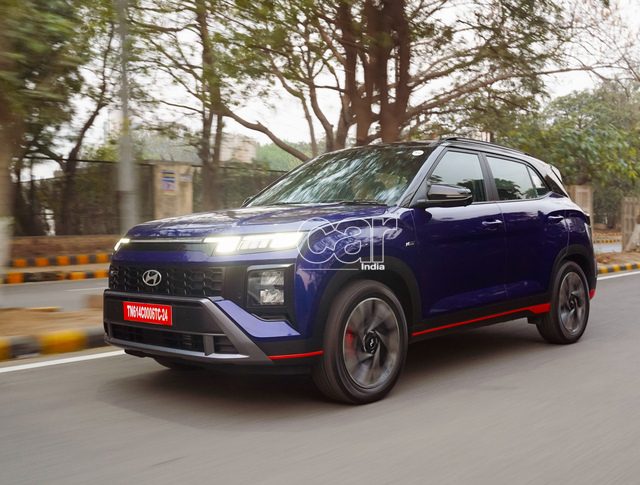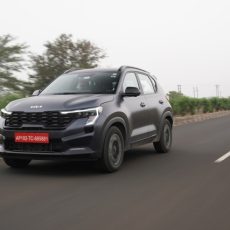The new MG Hector will be formally launched this month. An unknown quantity MG may be to many, but it seems like they’re on the right path. We’ve been at the wheel of the petrol mild-hybrid and the turbo-diesel models.

Story & Photography: Jim Gorde
Heading into the unknown is an anxious experience for many. Yet, let anxiety get in the way and you may as well write yourself off. Morris Garages, or MG, have had no such issues. They’ve got a heritage to lie back on, yet, with the name not being an everyday one has not slowed them down one bit. They’ve got their branding going full-swing. They’ve got dealers and after-sales set for the crunch, and they’ve readied a slew of brand-spanking new Hector crossovers for the first drive. At our disposal are the 48-volt mild-hybrid petrol and the turbo-diesel, powered by a FIAT-sourced 2.0-litre MultiJet II engine that also does duty in its two primary competitors the Jeep Compass and the Tata Harrier. At the time of the drive, the six-speed manual was the only choice of transmission as the dual-clutch automatic was yet to complete homologation formalities. The first and more exciting proposition was definitely the petrol mild-hybrid thanks to what it promises to bring to the table.
The new MG Hector petrol hybrid model we drove was the Burgundy Red which stood out nicely in the early morning sun as we would drive from Coimbatore to Kodanadu and then on to Coonoor, before returning to our starting point at the hotel. The Hector has an imposing presence and drew more than its fair share of attention turning heads or inviting many who wanted to take a closer look coming and asking about it. The front-end is bold, to say the least, and while MG say it’s inspired by the F35’s air-intake, to my eye, it has a hint of both Cadillac essence and Chevy Silverado design that accentuate its purposeful stance. The LED daytime-light cluster with floating turn-indicators, the large grille, the twin projector LED headlamps and LED fog-lamps below them and, of course, the prominent chrome garnish balance bling and functionality with a huge dose of style. The side proportions are generous, too, as well that should be. The Hector measures 4,655 millimetres long over a 2,750-mm wheelbase. It’s 1,835 mm wide and 1,760 mm tall. The chunky side cladding, rectangular wheel-arches, roof-rails and LED tail-lamp clusters add to the butch stance. However, the 17-inch wheels with 215/60 rubber look rather small; almost like they belong on a sedan. The 198-mm ground clearance is adequate. Remember, the Hector is not an off-road SUV. It doesn’t even have four-wheel drive, with the engine driving the front wheels. That is the way of the world, of late. The lack of a rear propeller shaft frees up a lot of room in the cabin, though.
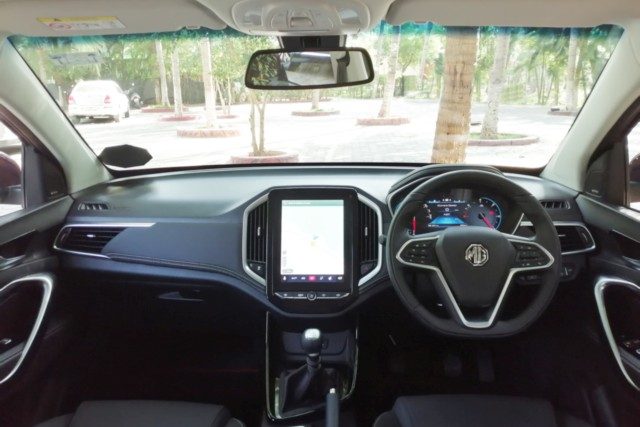
Even before you get inside, the solid feel becomes evident as you open the heavy doors. The MG Hector gets thick door panels with roll-formed door beams within for enhanced safety in side-impact collisions. The seats are reasonably large and offer adequate comfort. The powered front-seats allow for multiple adjustment possibilities and the cabin has a robust feel to it, with mostly dark plastic with some soft-touch art-leather panels on the dash, door panels and centre armrest. The element that is predominant at first glance and then some is the 10.4-inch centre touchscreen – earlier the reserve of the likes of the Tesla Model S and Model X and the Volvo XC90 among their other new models. The driver information display behind the steering wheel is a seven-inch full-colour unit in all but the base variant, and displays details of the car’s efficiency, tyre pressure, navigation, music and a lot more.
The rear passenger room is commendable, and the seats are capable of reclining with the base also moving accordingly. The seat-backs are also 60:40 split-folding, the side-windows are reasonably large and the rear air-vents keep things cool at the back. The power-tailgate gives access to a huge boot, but the sharp curvature of the tail-lamps and the deviation of the tail-gate design from a straight line on the sides can lead to some unexpected bumps the first few times. That said, the height is adjustable to whatever feels more natural.
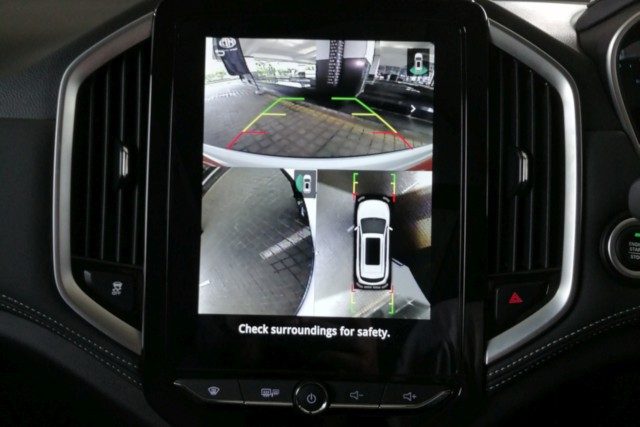
One of the highlights of the MG Hector is the iSmart system that brings more than 50 connected car features. MG have worked with Panasonic, SAP, Microsoft, Cisco, Adobe, Tomtom, Unlimit, Cognizant, Airtel and AccuWeather among others for hardware, software, apps and services to ensure the Hector is worthy of its ‘Internet car’ tag. The 10.4-inch HD touchscreen is the means of display, of course. The embedded Airtel SIM-card is 5G ready and operates on the IPV6 (Internet Protocol version 6). The app allows several functions for remote vehicle control, including checking vehicle status, locking and unlocking, opening and closing of the windows, sun-roof or tailgate, confirming the tyre pressure, and even smart drive analytics, geofencing and a find my car feature. The key feature, which also works well on the move, is the voice assistant. A simple “Hello, MG” activates the onboard computer aural interface. There are almost 100 commands for instructions to be carried out including operating the sunroof or driver side window, setting the climate control, media volume, starting or tuning the radio, picking a destination using the Tomtom navigation, adjusting the touchscreen brightness, zooming in or out, finding a restaurant or hospital, setting the home or office address and many more. There are even some which are programmed to be initiated without the activation command, such as the volume and temperature.
Connectivity, however important it may be for new-age cars and the autonomous future, still comes second to how the car is on the road in the hands of a human driver. That said, the petrol hybrid was the first one to drive. The MG Hector receives a 1.5-litre, four-cylinder turbo-petrol engine that is paired to a 48-volt mild-hybrid system. With a dedicated 48V lithium-ion battery and a belt alternator/starter generator, it allows for regenerative braking, auto start/stop and even an e-boost of up to 20 Nm. This not just fills in for any sort of turbo-lag but also promises as much as 12 per cent higher fuel economy and 11 per cent lower CO2 emissions. The assist is particularly evident at lower speeds and is, of course, subject to the battery charge level.

The Hector feels solid and well-built. The weight is evident, yes, but the suspension and damping characteristics are well-sorted and provide a planted feel with minimal body-roll. The steering wheel is adjustable both ways and doesn’t feel too angled. The soft-touch, imitation leather material used is excellent and the wheel feels nice to hold, with contours aiding grip. It’s adequately weighted and responsive enough, and makes for effective change of direction. That, together with the electronics and weight distribution, makes for a nice handling package. The brakes are all discs, anti-lock and with EBD and brake assist as well as hill-hold control. It didn’t, at any time – even in the sharpest of bends at reasonable speed, feel like it was going to roll over. And it wasn’t all down to the electronics; this is a properly sorted car. Good dynamics, a light clutch action, and a comfortable driving position are all check boxes ticked with a smile. Heading up to the Kodanadu view point, the Hector’s LED whites pierced through the clouds it drove through. A 48-volt mild-hybrid in the midst of crisp and clean nature is a refreshing reality to be a part of. That it’s potentially under Rs 20 lakh seems like a good deal.
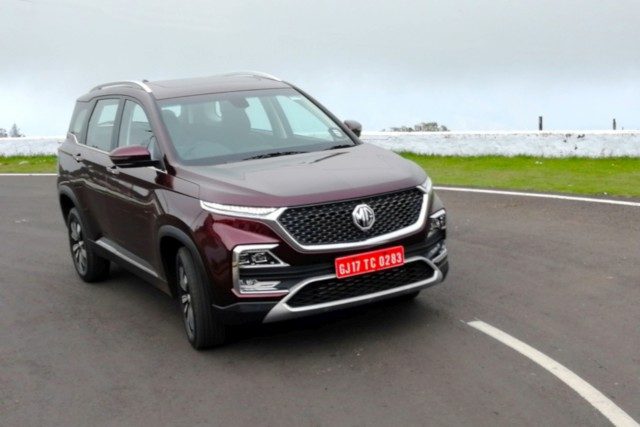
Need to Know – MG Hector Petrol Hybrid
Price: Rs 17-20 lakh (estimated, ex-showroom)
Engine: 1,451 cc, in-line four, turbo-petrol
Max Power: 143 PS @ 5,000 rpm
Max Torque: 250 Nm @ 1,600-3,600 rpm
Transmission: Six-speed manual, front-wheel drive
Hybrid System: 48-volt, lithium-ion battery pack, belt starter/generator
Peak Output: N/A kW, 20 Nm
Suspension: MacPherson strut front, torsion beam rear
Weight: 1,644 kg
More on page 2 >


